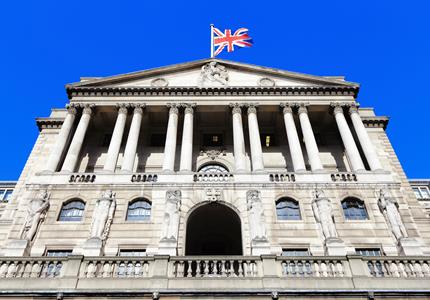

Weekly update - Enjoying the view
In the weekly update, which the cash management team wrote in January, we posed the question “have interest rates reached a plateau or a false summit?” and concluded that “just like inflation affecting the price of baked beans, it looks like higher interest rates are here to stay”.
Obviously for those with money on deposit, higher interest rates are a good thing and it’s fair to say that cash management customers are now happier than they have been for many years.
On the other hand, higher interest rates aren’t good news for everyone as people with mortgages will testify. Even those with fixed rate mortgages will probably experience an upward review in due course and whilst this is not good news, it is a fairly predictable outcome of tightening monetary policy as Central Banks in the UK, US and Europe attempt to reduce inflation.
However, a less well predicted outcome of higher interest rates has been the effect on smaller regional US banks in particular Silicon Valley Bank (“SVB”). We covered the failure of SVB in the weekly update we wrote in March so don’t propose to repeat old news but it is worth reminding ourselves that, regardless of the perception, higher interest rates are not always beneficial to all banks.
Added to the category of unexpected consequences is the effect of higher interest rates on economic activity. The theory behind Central Banks raising official rates, otherwise known as “tightening monetary policy” is that higher rates dampen economic activity thus reducing demand eventually leading to excess supply which should result in the price of goods falling and subsequently a fall in inflation. So why, after raising Base Rate from effectively zero in 2021 to 4.25% in 2023 aren’t goods prices falling? And, if Base Rate at 4.25% isn’t high enough to bring inflation down, will yet higher interest rates be the required medicine?
This note is being written on 10th May, the day before the Bank of England announces the decision of the Monetary Policy Committee on interest rates, which is widely expected to be another 0.25% increase bringing Base Rate to 4.50%. We therefore run the risk of looking stupid if the Bank of England surprises the market with an unexpected move!
That aside, why is inflation so persistent? The answer is probably very simple – employment, or lack of unemployment.
A feature of Brexit, and the subsequent pandemic, was that many non-UK workers went home. Wages at home had improved and the weakness of sterling resulted in UK earnings not buying as much in their domestic currency and meaning literally that the value of their take-home pay had fallen. The exodus of non-UK workers meant more job opportunities for UK nationals and, as a result, the unemployment rate is very low. In such a situation, an economic recession is virtually impossible and therefore if there is no recession then goods prices are unlikely to fall.
Economists are well aware of just such a situation and over the years have typically coined a handy phrase to sum up the forces at play. In this case it is “stag-flation”, being an amalgamation of stagnation and inflation. However, given that economic activity has remained robust, despite higher interest rates, the term “stag-flation” is not really appropriate for the current situation, which is more like a good old economic boom. This means that inflation is unlikely to fall as low as the Bank of England had predicted and therefore that interest rates will remain at or about current levels for the foreseeable future.
If economists have wrongly predicted the effect of higher interest rates then what else might surprise on the upside? The most likely economic fundamental ingredient to cause a surprise is probably the value of sterling. The value of the pound on the FX markets tumbled in the latter part of 2022 as a result of Liz Truss and Kwasi Kwarteng’s give-away policies, recovered when Rishi Sunak took over and since then has stabilised versus our major trading partners, the EU and the US. With regard to the value of sterling against the US dollar the FX rate recently touched $1.26 to the pound and if the US Central Bank signals that its rate rising cycle may be about to turn, then the odds of the pound reaching $1.30 will shorten considerably.
Given strengthening economic activity and a resilient housing market, it feels as if the Bank of England has little choice but to vote for another Base Rate rise. Again, great news for savers and even better if sterling strengthens against the US Dollar and you’re intending to take a US holiday later this year.



